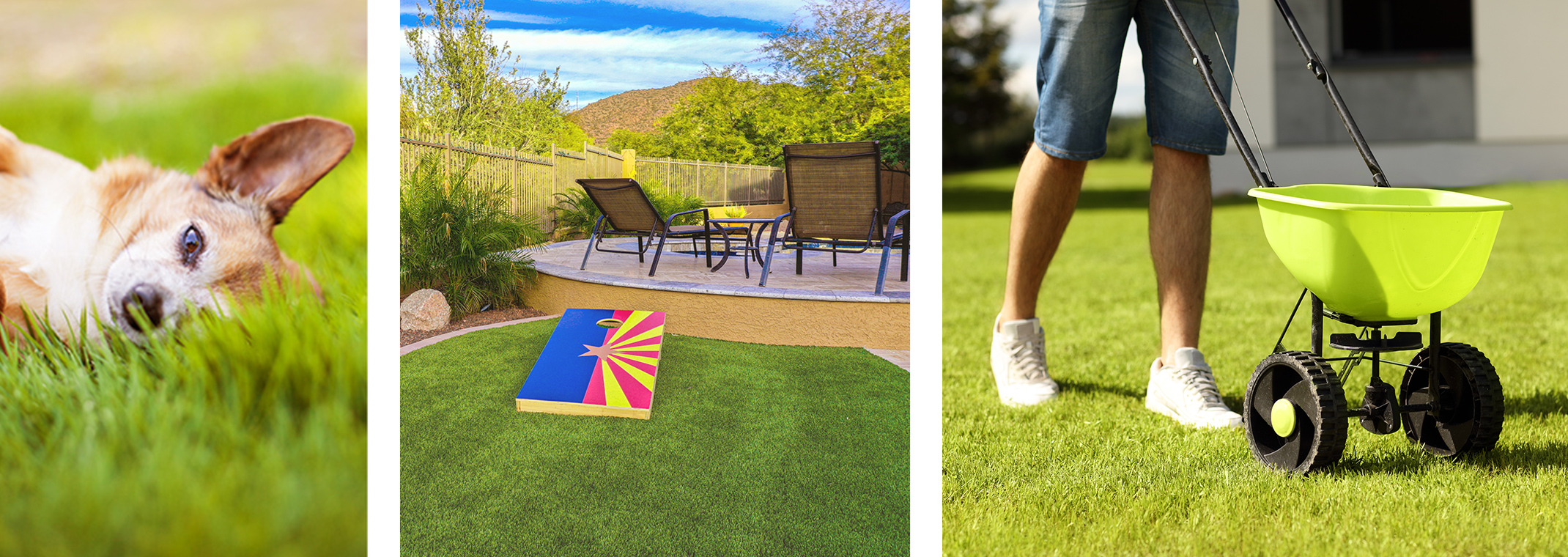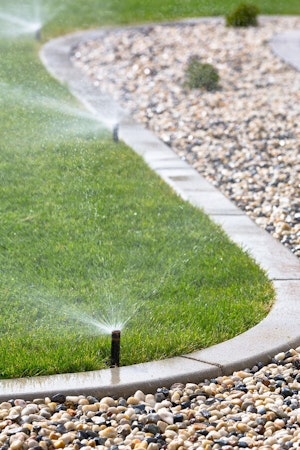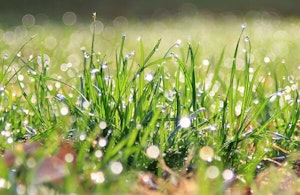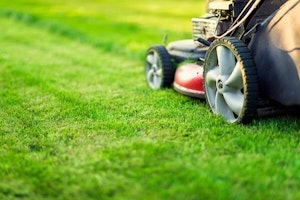 Be Inspired Blog - Arizona
Be Inspired Blog - Arizona

How to Prepare and Maintain Your Summer Lawn
Heat-loving breeds of grass that cover your lawn during the summer are already waking up and beginning to stretch their roots. So how can you make sure that you’re providing the best conditions for growing grass and enjoying your small desert oasis?
Bermuda: The Best Seed for Growing Grass on Your Lawn or Limited Turf Area This Summer

According to Southwest Gardener, the ideal seeds for growing grass on your lawn year-round are rye and Bermuda. Rye loves the cooler season, performing best between October and May – but Bermuda is the hardy, heat-loving variety that will keep you seeing green during the hottest part of the year – from June through September.
Limited Turf Area
With water convervation in mind, many people are cutting down on the size of their lawns and instead growing sections of lawn called limited turf areas that can be grown and enjoyed throughout the year...
If there’s a part of your landscape that you want to enjoy as a lawn/limited turf area all year long, April/May is a great time of the year to transition from your winter lawn to your summer Bermuda grass lawn.
Bermuda begins its summer growth when the top three inches of soil in your lawn are thoroughly, and consistently, warmed. Even if daytime temperatures are climbing into the 80s, overnights at 60 or below will delay new growth. Fertilizing, aerating and dethatching your lawn before the grass has begun to vigorously grow can cause damage to the plant.
During the winter, Bermuda grass will turn yellow and appear to be dead, but don’t fear – it will come right back to life in the spring. If you want to obtain a winter lawn, rye grass can be planted in October and will form a thick cover over the top of Bermuda. However, rye grass does not survive the summer and will need to be replanted each year.
Summer Watering Tips for Growing Grass on Your Lawn
The key to watering your lawn during the summer is to water deeply, but no more than absolutely necessary. To nurture growing grass during the hot summer months, water your lawn no more than once every three days – but water long enough that the moisture penetrates eight to 10 inches deep.
Since overwatering can encourage fungus and diseases, here is an quick exercise from the Phoenix Area Turf Water Management to help calculate exactly how long to water in order to properly hydrate your lawn this summer.

Phoenix Lawn Watering Guide
Step 1. Place several empty, shallow, flat-bottomed cans (think cans used for tuna or wet cat food) on your lawn. You should only need four cans for a 15-foot by 15-foot lawn, evenly distributed.
Step 2. Turn on your sprinklers for exactly 15 minutes.
Step 3. Measure the depth of water in each can to the nearest 10th of an inch and record all depths on a piece of paper.
Step 4. Log in to the Phoenix Area Turf Water Management website and enter your measurements for each can to determine the proper amount of time to water your lawn.
According to the website, nearly 50 percent of a single home’s water usage is used outside, and most of that is for growing grass. Here are some helpful tips they provided to help conserve water.
When should you water your lawn to encourage growing grass during the summer?
Water early in the morning when winds and evaporation rates are lower. High wind speeds can distort sprinkler patterns and produce non-uniform irrigation.
How often should you water your lawn during the summer to encourage growing grass?
If you have been watering your lawn thoroughly, Bermuda grass will develop deep root growth that does not need to be watered more often than once every three days. Casual watering will keep roots closer to the surface and cause the lawn to wilt quickly.
Why is watering until the grass is soggy a bad idea?
You will be wasting water and increasing your water bills. Overwatered lawns can be more susceptible to diseases such as fungus and root-rots. Damp grass can also harbor mosquito larva.

4 Signs Your Lawn Is Underwatered
- Your Bermuda grass has bluish-grey tint.
- The grass doesn't spring back after being stepped on.
- It is difficult to push a screwdriver or skewer into the soil.
- The turf still feels warm in the evening after the sun goes down.
4 Signs Your Lawn Is Overwatered
- Water is consistently puddled in areas.
- The turf has a musty odor.
- The soil is extremely soft and mushy.
- Algae or mushrooms are present.
More Tips for Growing Grass and Conserving Water on your Lawn this Summer
- If water runs off your lawn when sprinkling, split the recommended run time into two irrigation events that are separated in time by at least 30 minutes. Aeration may be needed to encourage water absorption.
- Use the same sprinkler type and nozzle size in each area of lawn watered.
- Adjust sprinklers so they spray the grass, not on walls, driveways and sidewalks.
- Make sure growing grass does not block the sprinklers.
- Replace broken and missing sprinkler heads immediately. A missing sprinkler head can lose more than 12 gallons of water per minute.
- If some areas of your lawn appear dry after sprinkling, adjust sprinkler position or consider adding a sprinkler for better coverage instead of increasing watering time.
Watering Made Easy with Texts from Water – Use It Wisely
To assist residents with watering, you can sign up to receive a monthly text message from local water conservation specialists through Water – Use It Wisely.

Mowing your Summer Lawn to Promote Healthy Growing Grass
Pay close attention to the height that your lawn mower’s blade is adjusted to. Scalping the lawn (mowing growing grass too closely to the ground) will use more water and discourage deep root growth. Common Bermuda grass should be mowed to a height of three-quarters of an inch to two inches high, and mowed every five to seven days to maintain it during peak growing season (May to September). Raise the height of your mower blade as the temperatures climb in the summer, and lower it for a shorter cut as the weather cools down in the fall.
Dethatch Your Lawn Over the Summer to Keep Growing Grass Healthy
Thatch is a mat of plant material made up of grass stems and roots. Excessive thatch can be caused by overwatering or excess fertilizing and can suffocate growing grass. If the thatch layer in your lawn becomes thicker than a half inch, it will need to be removed.
Dethatch Bermuda grass mid-May into June when it is growing at its fastest rate so that it can quickly recover. You can rent a dethatcher from most hardware stores. Set the blade to a quarter inch above soil height to prevent the machine from damaging the soil or growing grass.
After dethatching, rake the excess material off the lawn and mow.

Core Aerate Your Lawn to Encourage Healthy Roots in Growing Grass
Core aerating your soil will help relieve hard, compacted areas in your lawn that cause puddling or runoff and inhibit root growth. The best time to aerate Bermuda grass is in May or June, when the nighttime temperatures have been in the mid-60s for more than a week and when the grass is growing quickly.Use a core aerator, not a spike aerator. Core aerators pull plugs of soil out of your lawn where spike aerators push soil in and compact it further.
Fertilize Your Lawn in Early Summer
Bermuda needs regular fertilizing for good growth and color during the growing season. But be careful, because an over fertilized lawn will require more water and more frequent mowing. A good rule of thumb is to apply fertilizer monthly during summer with a good slow release fertilizer with iron, such as True Organic - Organic Lawn Food according to the label's instructions which will give you a good even growth and require less mowing and water.
Want More?
To learn more about the specific products we recommend for a fabulous summer lawn, click the button below.
Lawn Alternatives?
If you are looking to reduce the footprint of your lawn and instead create a limited turf area, we've got some great groundcover alternatives to growing grass that you can chooose from.
Watch for Signs of Heat Illness While Working on Your Lawn this Summer
Did you know that every summer some 2,000 people in the Phoenix area end up in the emergency room with heat illness? We recommend working on your lawn in the early morning and late evening this summer, but if you’ll be outside during the hottest hours of the day it’s important to know the signs of heat illness.

According to the Arizona Department of Health Services, the path to a life-threatening heat stroke follows a predictable series of steps, with several warning signs along the way.
Thirsty: Being thirsty signals that you’re already starting to get dehydrated. As soon as you get thirsty, make it a point to drink plenty of water and get out of the heat.
Heat cramps: Cramping, pain and spams in your abdominal muscles and legs signals that you’re losing too much water and salt. Drink water and get inside.
Heat exhaustion: Signs you are entering dangerous territory include “cool, moist, pale, flushed or red skin; heavy sweating; headache; nausea or vomiting; dizziness; and exhaustion.” However, your body temperature will be near normal. With these symptoms, get inside right away and drink half a glass of cool water every 15 minutes until you improve.
Heat stroke: During heat stroke, your temperature spikes and can damage your brain and internal organs. Other signs include “hot, red and dry skin; changes in consciousness; rapid, weak pulse; and rapid, shallow breathing.” At this point, call 9-1-1 immediately.

Some ways to avoid heat illness include:
- Staying indoors
- Wearing lightweight clothes in light colors
- Taking regular breaks
- Carrying and drinking more water than you think you need
Let the Experts at SummerWinds Help
Pop in to any one of our locations to talk with the SummerWinds gardening experts about what you can do for your lawn this summer. Whether it’s growing grass or a more natural, drought-resistant landscape, we have everything you need to get you started and to help with maintenance.

